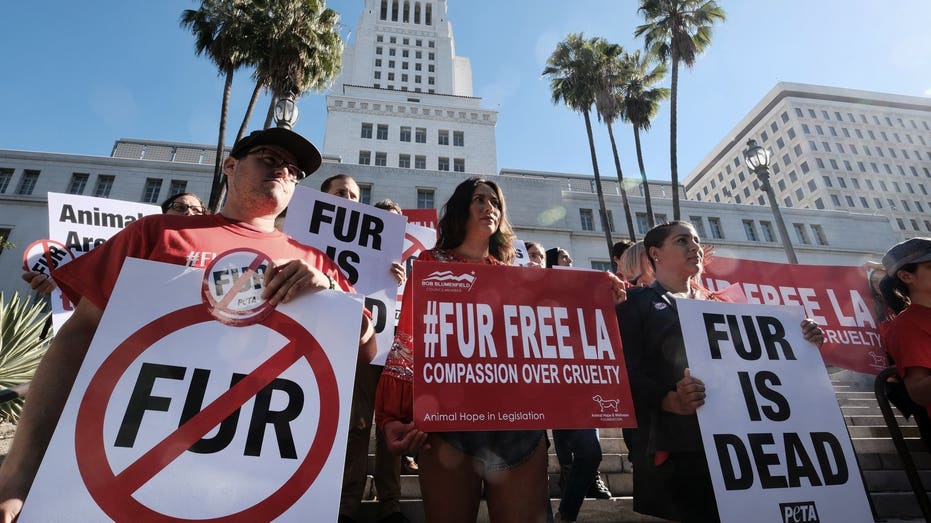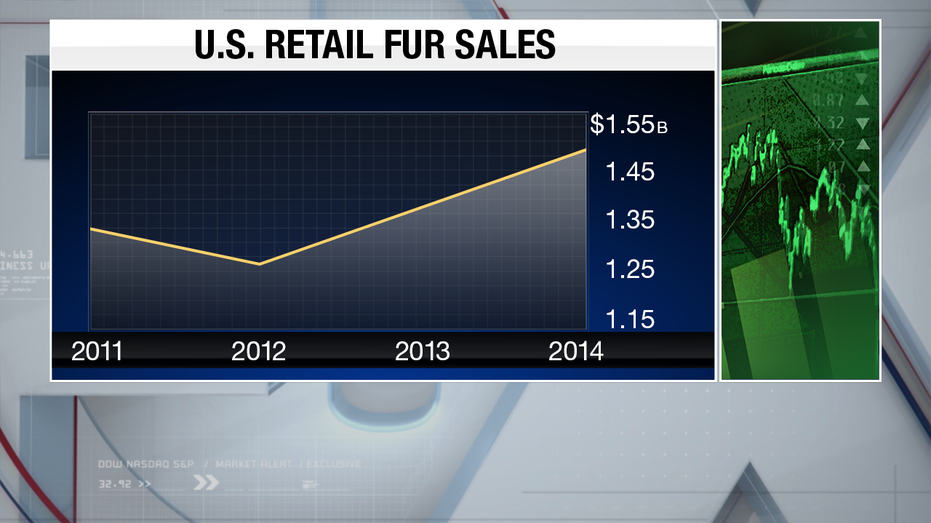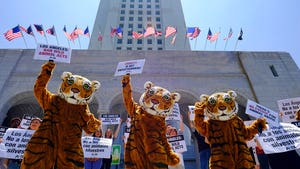California bans fur statewide, but the multibillion-dollar industry won’t be easy to kill
California said no to fur in a historic legislative move that will ban the sale of newly manufactured fur products in the state.
The bill was signed into law on Saturday by Democratic Gov. Gavin Newsom.
"California is a leader when it comes to animal welfare, and today that leadership includes banning the sale of fur," Newsom said in a statement.
The ban takes effect in starting in 2023 and also include animal skins such as alligator, crocodile, caiman, other lizard species and hippo.
Exclusions to the ban will include used fur that already exists in the state, fur used for religious or tribal purposes, dog and cat fur, as well as leather, cowhides, deer, sheep and goatskin and taxidermy.
West Hollywood, Berkeley, San Francisco and Los Angeles were initial Californian cities that adopted local ordinances to ban the manufacture and sale of furry goods. Last month, Newsom signed a bill to ban commercial fur trapping.
In recent years, the number of fur trapping licenses sold in California have declined considerably. According to records from the California Department of Fish and Wildlife, from 1950 to 1951 there were 1,053 licenses sold – which resulted in the reported trapping of 59,081 animals. Conversely, from 2017 to 2018, only 133 licenses were sold – which led to the total harvest of 1,568 animals and the sale of 1,241 pelts.

Protesters with the People for the Ethical Treatment of Animals (PETA) hold signs to ban fur in Los Angeles prior to a news conference at Los Angeles City on Tuesday, Sept. 18, 2018. (AP Photo/Richard Vogel)
Animal rights proponents have cited the decrease to justify the ban for what appears to be a low demand. However, the warm weather California is famously known for may also be a contributing factor, since the southern areas of the state don't get the kind of chill other parts of the country experience.
Overall demand across the country hasn't quite declined though.
Sales at luxury coat maker Canada Goose Holdings Inc. climbed 50 percent in its December-quarter, according to a report in Reuters earlier this year. Freezing temperatures that season along with the subsequent polar vortex may have played a role in driving revenue.
Stocks In This Article:
Whatever the reason, the Ontario-based brand’s iconic goose down feathered parkas that are trimmed in coyote fur have held strong while some people try to grapple on how to approach issues like animal rights.
“From what I’ve seen with my friends, fur is not a dying trend,” Nicole Farese, a 23-year-old resident of Nanuet, N.Y. told the Wall Street Journal in April 2019. “Real fur is better for the environment,” she explained as her reason for avoiding faux fur.
Vice president of the International Fur Federation trade group, Nancy Daigneault, concurred in the same report that although faux fur is a cruelty-free option that is popular with animal lovers, it comes with its own set of complications.
“Fake fur is made from petrochemicals and plastic, which is very harmful for the environment,” Daigneault said, “It will end up in a landfill and is not biodegradable. Real fur will decompose naturally.”
The Pew Charitable Trusts cited Euromonitor International, a market research company based in the United Kingdom reported that fur sales in the U.S. more than doubled between 2009 and 2018, going from $219.8 million to $531 million. If these numbers are true, that’s a 141.6 percent increase within the span of nine years.
GET FOX BUSINESS ON THE GO BY CLICKING HERE
According to industry insiders at the Fur Information Council of America (FICA), that number may be higher. The organization reported U.S. fur sales to be as high as $1.5 billion in 2014, which was a 7.3 percent jump from data it collected the previous year.

“If fur, fur trim and accessories sales through designer and fashion boutiques, ski/sporting goods boutiques, luxury shoe stores, department stores and online retail sites are factored in total fur sales would be substantially higher,” the report said.
It included faux fur and shearling in these numbers, but FICA did not offer a breakdown of how much of these sales were achieved by real fur alone.
CLICK HERE TO READ MORE ON FOX BUSINESS
Other interesting findings the report cites include an approximation that there are 1,100 fur retailers and 100 fur manufacturers in the U.S. – 85 percent of which is said to be independent “family-run businesses which have been passed from generation to generation.”
